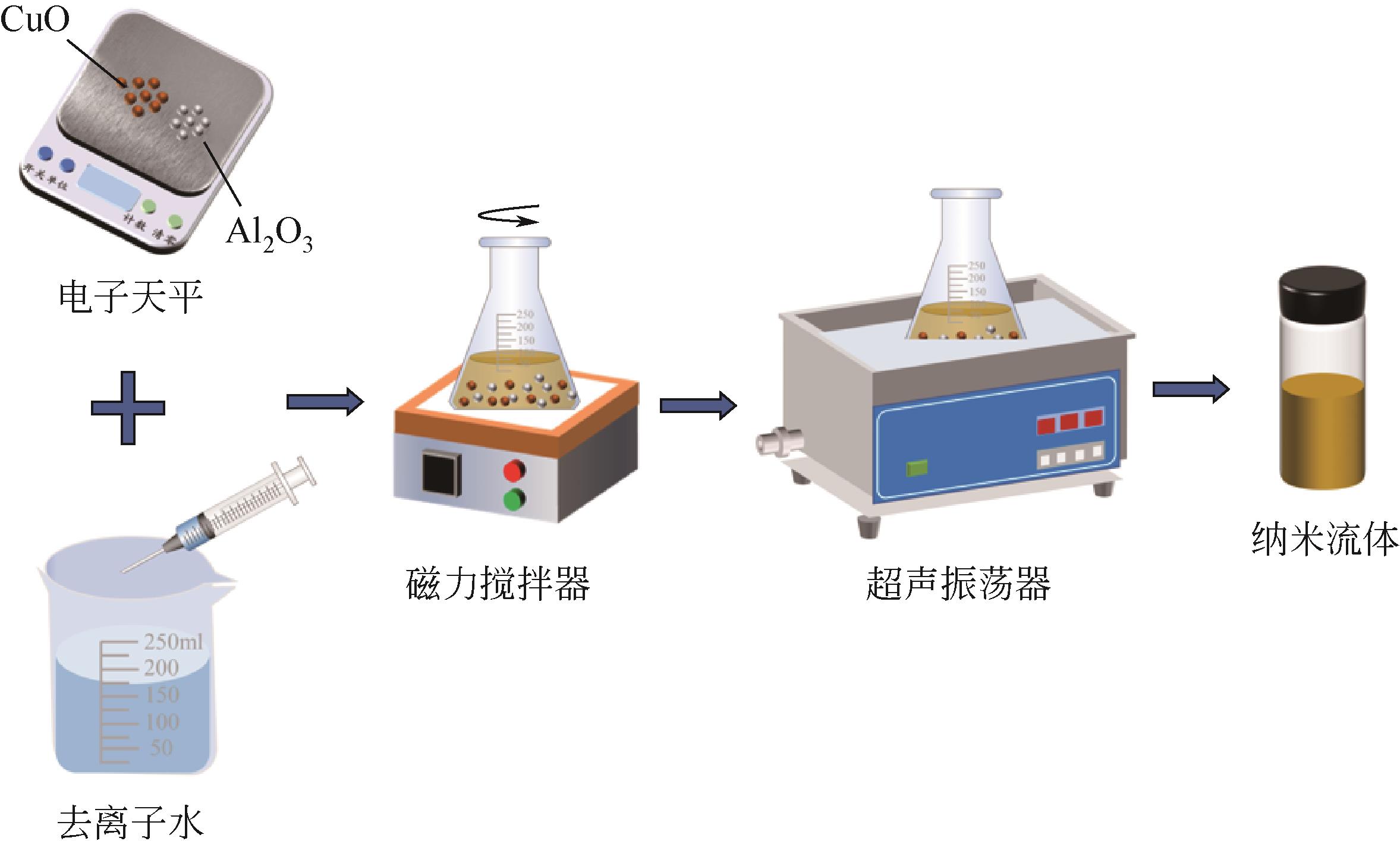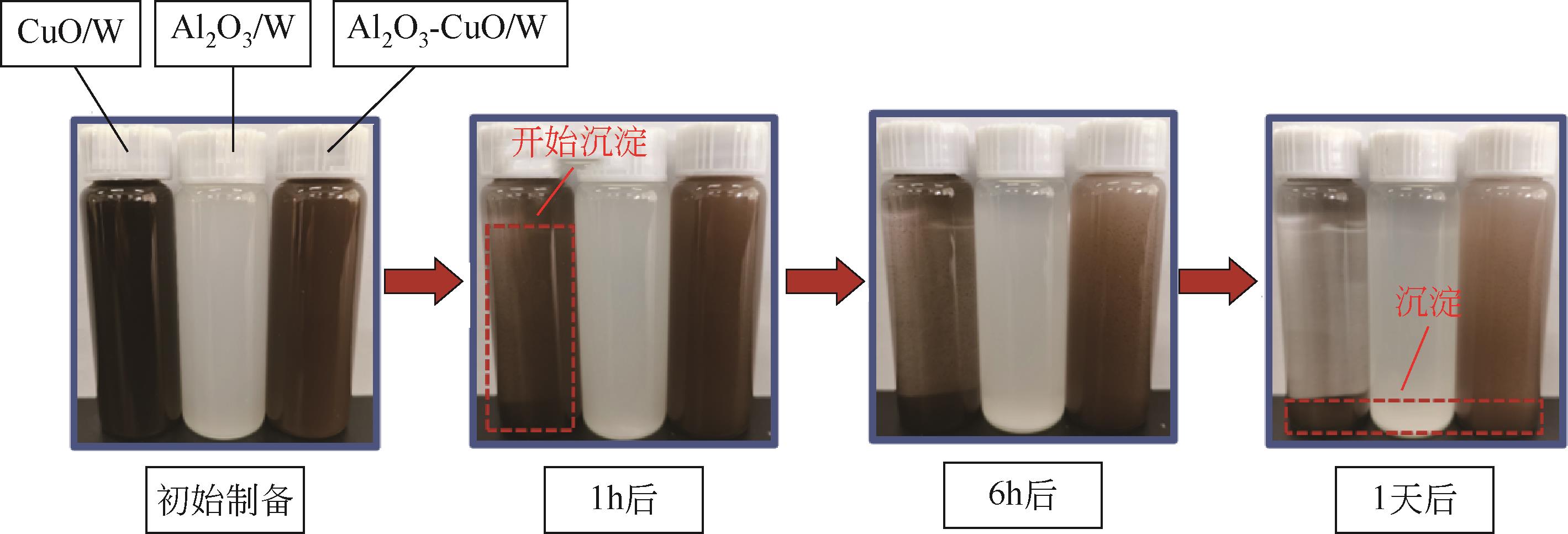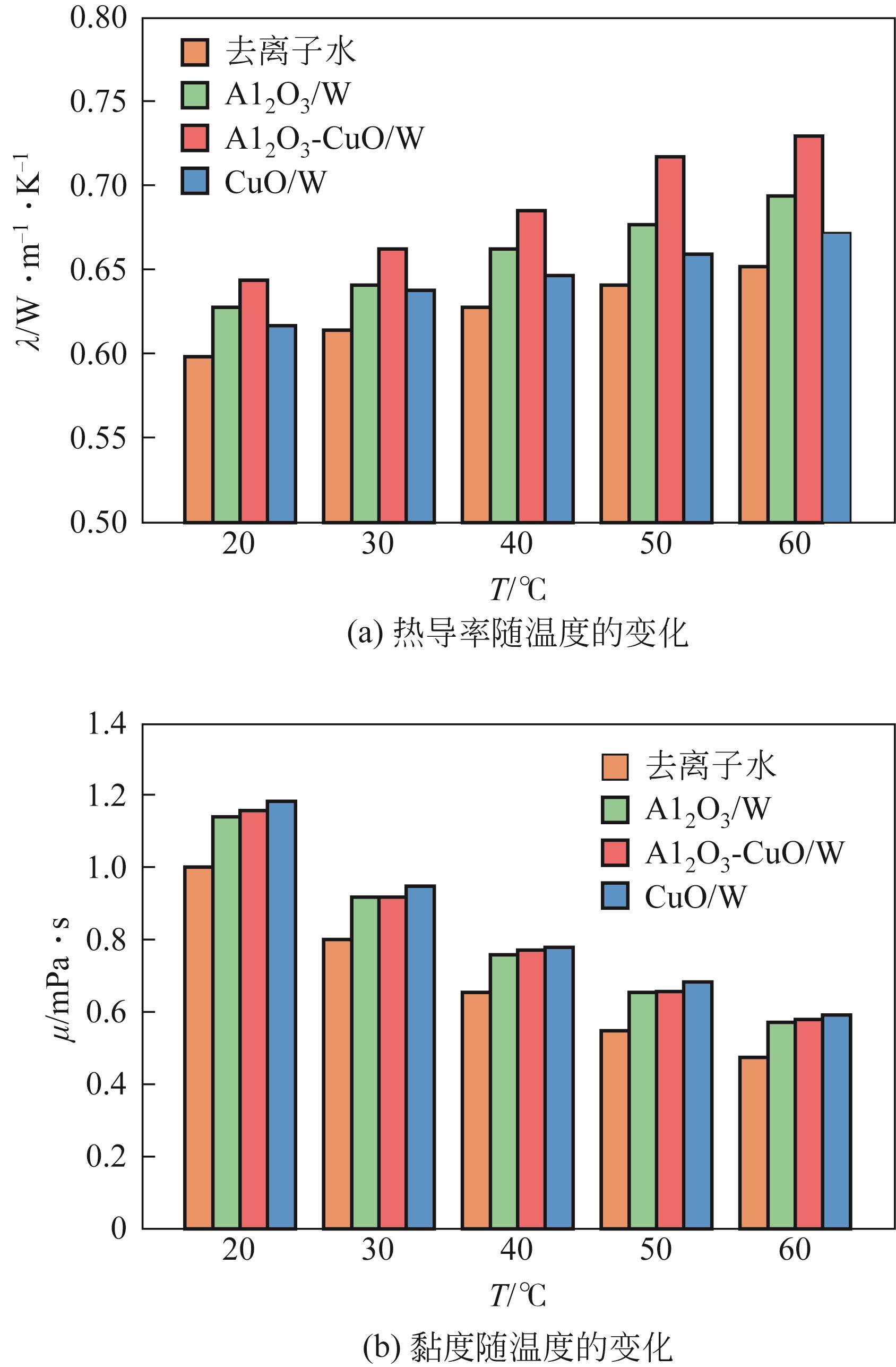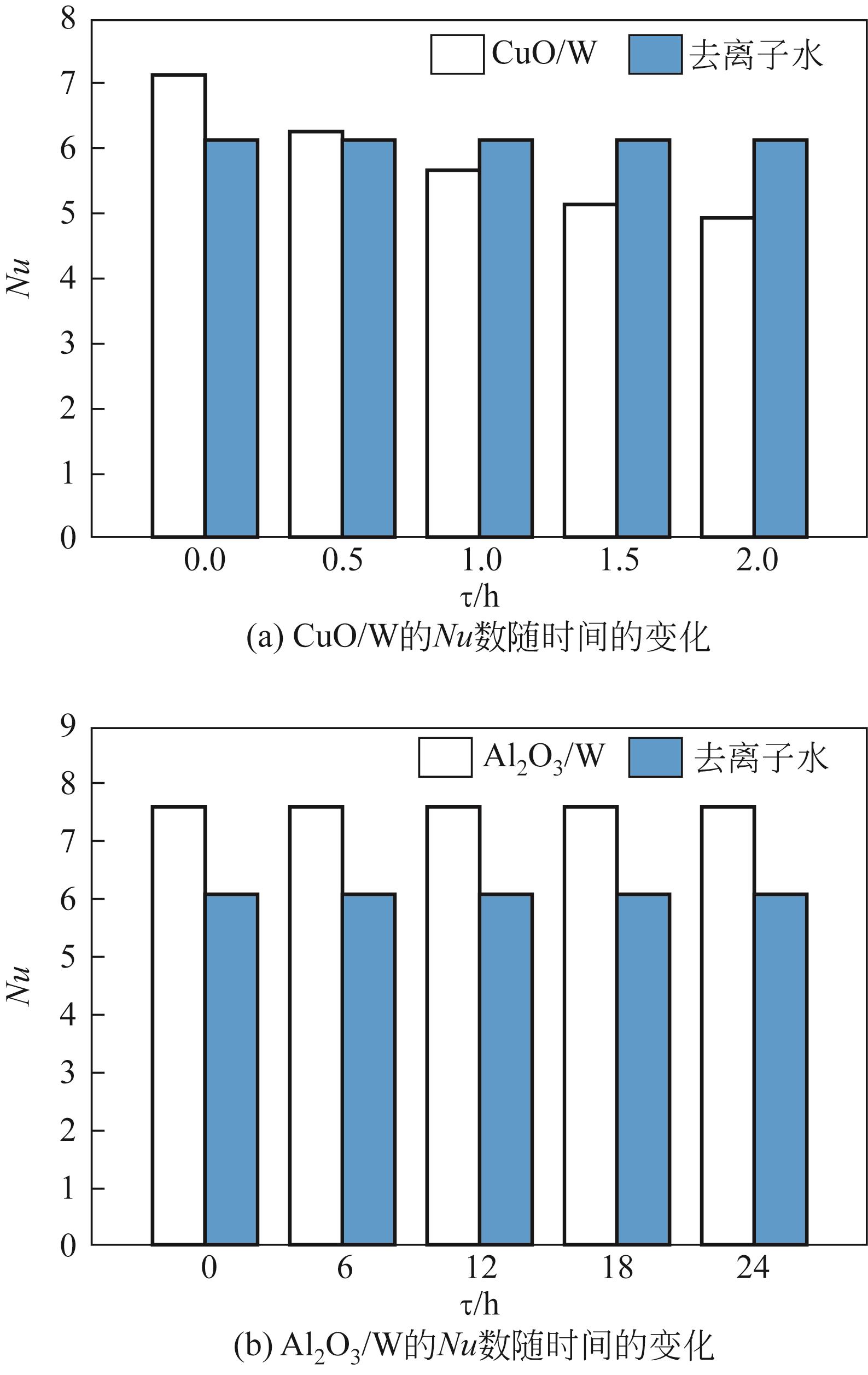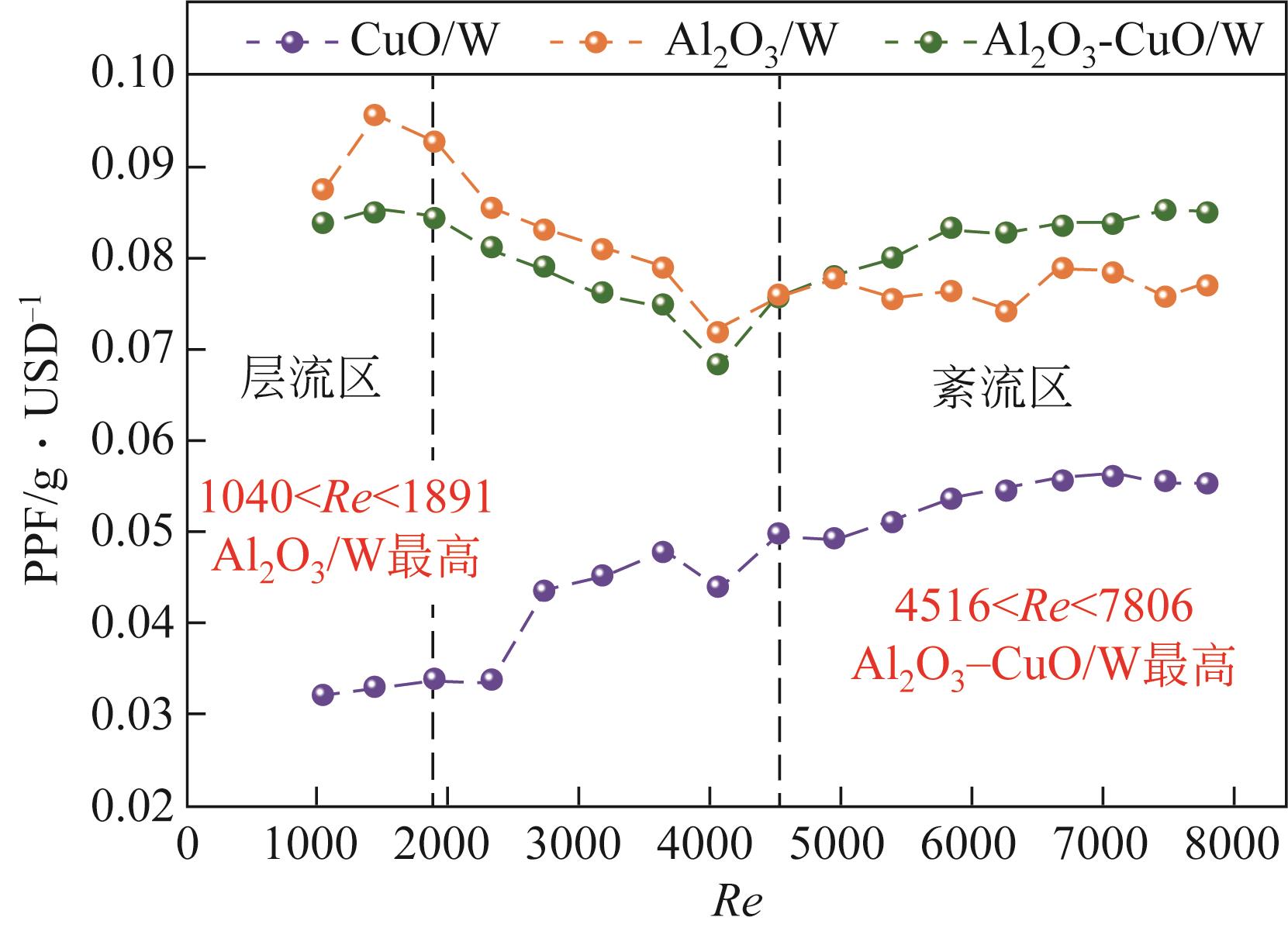| 1 |
WEN T, LU L, ZHANG S, et al. Experimental study and CFD modelling on the thermal and flow behavior of EG/water ZnO nanofluid in multiport mini channels[J]. Applied Thermal Engineering, 2021, 182: 116089.
|
| 2 |
BUONGIORNO J. Convective transport in nanofluids[J]. Journal of Heat Transfer, 2006, 128(3): 240-250
|
| 3 |
AMERI M, AMANI M, AMANI P. Thermal performance of nanofluids in metal foam tube: Thermal dispersion model incorporating heterogeneous distribution of nanoparticles[J]. Advanced Powder Technology, 2017, 28(10): 2747-2755.
|
| 4 |
HAMZAH M H, SIDIK N A C, KEN T L, et al. Factors affecting the performance of hybrid nanofluids: A comprehensive review[J]. International Journal of Heat and Mass Transfer, 2017, 115: 630-646.
|
| 5 |
YANG L, DU K. A comprehensive review on heat transfer characteristics of TiO2 nanofluids[J]. International Journal of Heat and Mass Transfer, 2017, 108: 11-31.
|
| 6 |
ZHANG S, LU L, WEN T, et al. Turbulent heat transfer and flow analysis of hybrid Al2O3-CuO/water nanofluid: An experiment and CFD simulation study[J]. Applied Thermal Engineering, 2021, 188: 116589.
|
| 7 |
郑钦月, 章学来, 王章飞, 等. 表面活性剂对纳米流体真空制取冰桨的影响[J]. 高校化学工程学报, 2019, 33(2):435-442.
|
|
ZHENG Q Y, ZHANG X L, WANG Z F, et al. Effects of surfactants on vacuum ice-making of nano-fluids[J]. Journal of Chemical Engineering of Chinese Universities, 2019, 33(2):435-442.
|
| 8 |
YOGESWARAN M, KADIRGAMA K, RAHMAN M M, et al. Temperature analysis when using ethylene-glycol-based TiO2 as a new coolant for milling[J]. International Journal of Automotive and Mechanical Engineering, 2015, 11: 2272-2281.
|
| 9 |
BHANVASE B A, SARODE M R, PUTTERWAR L A, et al. Intensification of convective heat transfer in water/ethylene glycol based nanofluids containing TiO2 nanoparticles[J]. Chemical Engineering and Processing: Process Intensification, 2014, 82: 123-131.
|
| 10 |
AZMI W H, HAMID K A, USRI N A, et al. Heat transfer and friction factor of water and ethylene glycol mixture based TiO2 and Al2O3 nanofluids under turbulent flow[J]. International Communications in Heat and Mass Transfer, 2016, 76: 24-32.
|
| 11 |
SUNDAR L S, SHARMA K V, SINGH M K, et al. Hybrid nanofluids preparation, thermal properties, heat transfer and friction factor—A review[J]. Renewable and Sustainable Energy Reviews, 2017, 68: 185-198.
|
| 12 |
ADUN H, KAVAZ D, DAGBASI M. Review of ternary hybrid nanofluid: Synthesis, stability, thermophysical properties, heat transfer applications, and environmental effects[J]. Journal of Cleaner Production, 2021, 328: 129525.
|
| 13 |
GUPTA M, SINGH V, KUMAR R, et al. A review on thermophysical properties of nanofluids and heat transfer applications[J]. Renewable and Sustainable Energy Reviews, 2017, 74: 638-670.
|
| 14 |
VALLEJO J P, PRADO J I, LUGO L. Hybrid or mono nanofluids for convective heat transfer applications. A critical review of experimental research[J]. Applied Thermal Engineering, 2022, 203: 117926.
|
| 15 |
TURCU R, DARABONT A L, NAN A, et al. New polypyrrole-multiwall carbon nanotubes hybrid materials[J]. Journal of Optoelectronics and Advanced Materials, 2006, 8(2): 643-647.
|
| 16 |
马明琰, 翟玉玲, 轩梓灏, 等. 三元混合纳米流体稳定性及热性能[J]. 化工进展, 2021, 40(8): 4179-4186.
|
|
MA Mingyan, ZHAI Yuling, XUAN Zihao, et al. Stability and thermal performance of ternary hybrid nanofluids[J]. Chemical Industry and Engineering Progress, 2021, 40(8): 4179-4186.
|
| 17 |
HAMID K A, AZMI W H, NABIL M F, et al. Experimental investigation of nanoparticle mixture ratios on TiO2-SiO2 nanofluids heat transfer performance under turbulent flow[J]. International Journal of Heat and Mass Transfer, 2018, 118: 617-627.
|
| 18 |
MUKHERJEE S, MISHRA P C, ALJUWAYHEL N F, et al. Thermo-fluidic performance of SiO2-ZnO/water hybrid nanofluid on enhancement of heat transport in a tube: experimental results[J]. International Journal of Thermal Sciences, 2022, 182: 107808.
|
| 19 |
BHATTAD A, SARKAR J. Hydrothermal performance of plate heat exchanger with an alumina-graphene hybrid nanofluid: Experimental study[J]. Journal of the Brazilian Society of Mechanical Sciences and Engineering, 2020, 42(7): 1-10.
|
| 20 |
GUPTA M, SINGH V, KUMAR S, et al. Experimental analysis of heat transfer behavior of silver, MWCNT and hybrid (silver+MWCNT) nanofluids in a laminar tubular flow[J]. Journal of Thermal Analysis and Calorimetry, 2020, 142(4): 1545-1559.
|
| 21 |
MA M Y, ZHAI Y L, YAO P T, et al. Synergistic mechanism of thermal conductivity enhancement and economic analysis of hybrid nanofluids[J]. Powder Technology, 2020, 373: 702-715.
|
| 22 |
DAS P K. A review based on the effect and mechanism of thermal conductivity of normal nanofluids and hybrid nanofluids[J]. Journal of Molecular Liquids, 2017, 240: 420-446.
|
| 23 |
AHMED W, KAZI S N, CHOWDHURY Z Z, et al. Ultrasonic assisted new Al2O3@TiO2-ZnO/DW ternary composites nanofluids for enhanced energy transportation in a closed horizontal circular flow passage[J]. International Communications in Heat and Mass Transfer, 2021, 120: 105018.
|
| 24 |
杨世铭, 陶文铨. 传热学[M]. 4版. 北京: 高等教育出版社, 2006: 563.
|
|
YANG S M, TAO W Q. Heat transfer[M]. 4th ed. Beijing: Higher Education Press, 2006: 563.
|
| 25 |
BABU J A R, KUMAR K K, RAO S S. State-of-art review on hybrid nanofluids[J]. Renewable and Sustainable Energy Reviews, 2017, 77: 551-565.
|
| 26 |
XUAN Z H, ZHAI Y L, MA M Y, et al. Thermo-economic performance and sensitivity analysis of ternary hybrid nanofluids[J]. Journal of Molecular Liquids, 2021, 323: 114889.
|
| 27 |
SIEDER E N, TATE G E. Heat transfer and pressure drop of liquids in tubes[J]. Industrial & Engineering Chemistry, 1936, 28(12): 1429-1435.
|
| 28 |
DITTUS F W, BOELTER L M K. Heat transfer in automobile radiators of the tubular type[J]. International Communications in Heat and Mass Transfer, 1985, 12(1): 3-22.
|
| 29 |
INCROPERA F P, DEWITT D P, BERGMAN T L, et al. Fundamentals of heat and mass transfer[M]. New York: Wiley, 1996.
|
| 30 |
BLASIUS H. Das aehnlichkeitsgesetz bei reibungsvorgängen in flüssigkeiten[M]//Mitteilungen über Forschungsarbeiten auf dem Gebiete des Ingenieurwesens. Berlin, Heidelberg:Springer, 1913: 1-41.
|
| 31 |
DEMIRKIR Ç, ERTÜRK H. Convective heat transfer and pressure drop characteristics of graphene-water nanofluids in transitional flow[J]. International Communications in Heat and Mass Transfer, 2021, 121: 105092.
|
 ), ZHAI Yuling(
), ZHAI Yuling( ), CHEN Wenzhe, SHEN Xin, XING Ming
), CHEN Wenzhe, SHEN Xin, XING Ming
